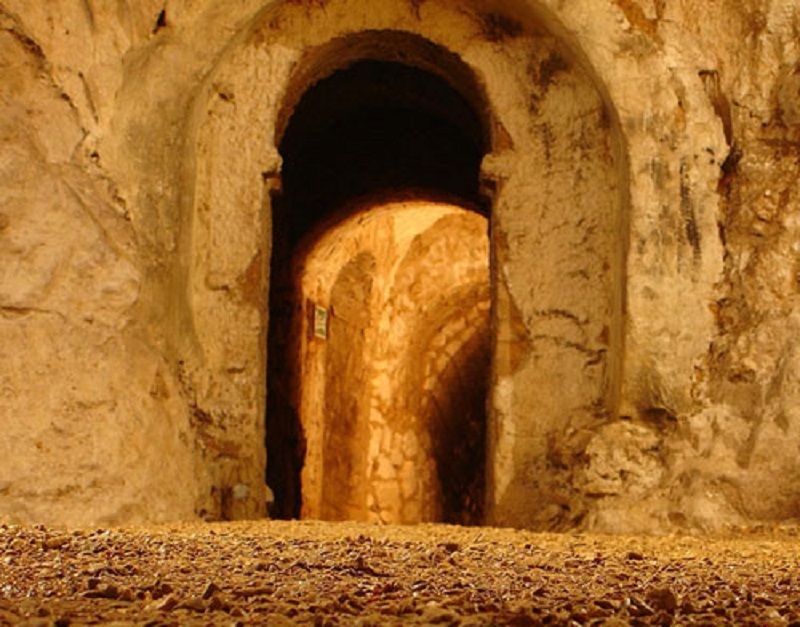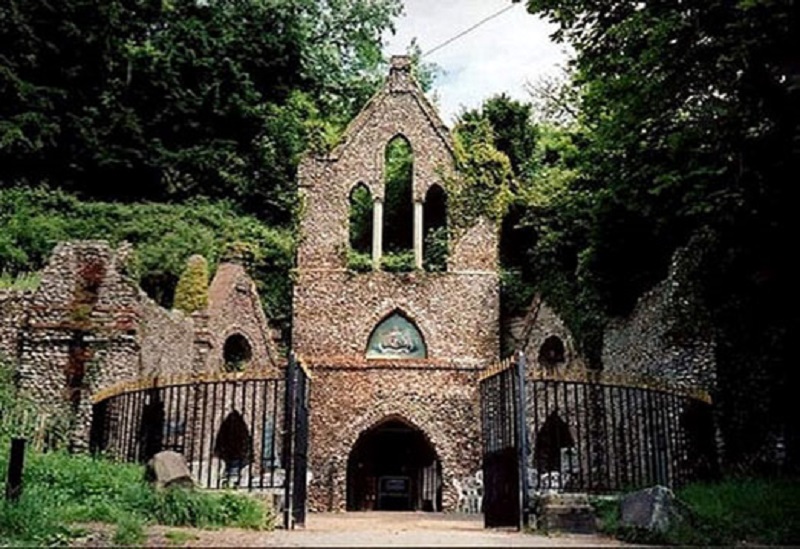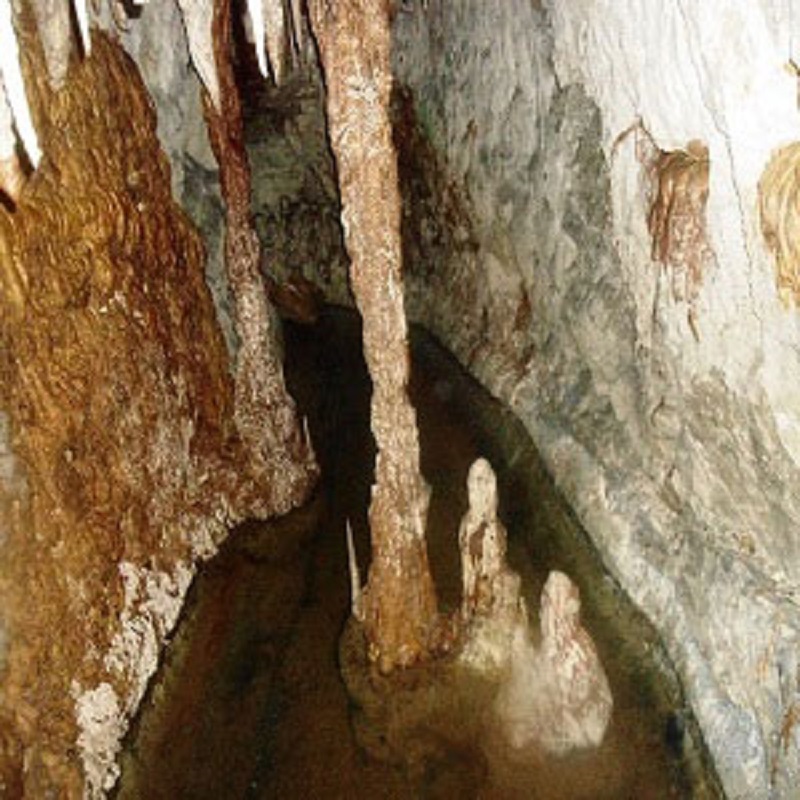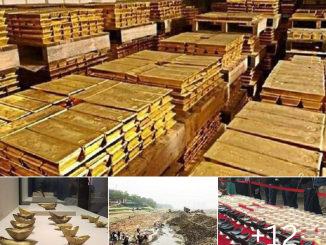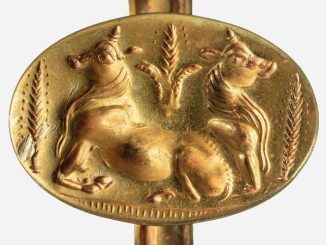Hellfire Caves in West Wycombe are a network of man-made chalk and flint caves in Buckinghamshire, England, famous for their sordid past. They are named after the infamous Hellfire Club, which included high-ranking members of society, aristocrats and politicians who were said to have participated in pagan rituals, orgies and ghosts. Dark magic deep within the underground chambers beneath West Wycombe. However, the caves are places where myth and reality are so intertwined that it is difficult to separate one from the other.
According to accepted accounts, the English politician Sir Francis Dashwood undertook an ambitious project in 1748 to provide chalk for a 5km road between West Wycombe and High Wycombe. This was said to be an effort to combat local poverty by providing jobs to farmers impoverished by successive droughts and crop failures. Workers were hired at a wage of one shilling per day (enough to support a family in Georgian times) to mine chalk and flint on his estate. Considering they were all dug by hand, the caves are often considered an incredible feat of engineering.
However, the theory that the caves were excavated for mining remains questionable because the Chiltern Hills flint covers the chalk cliffs and did not need to be mined, except by small open flint pits. There are many in the area. Did Sir Francis have another reason for creating a network of underground chambers?
Inside Hellfire Cave. Credit: Neil Rickards. Source: Wikipedia
Hellfire Club
In addition to being a politician, Sir Francis Dashwood also founded the Knights of St Francis of Wycombe, a private members’ club that later became known as the Hellfire Club. The club became a playground for “men of quality,” including members of the British aristocracy, politicians, and other elite members of society, including William Hogarth, John Wilkes, Thomas Potter and John Montagu, 4th Earl of Sandwich. Although not believed to be a member, Benjamin Franklin was a close friend of Dashwood and visited the cave many times.
The club’s motto is Fais ce que tu voudras (Do what you want), a life philosophy later used by Aleister Crowley. Legend has it that members participated in many illegal activities including sex parties, drinking, humiliation, and sham rituals. It’s no surprise that Sir Francis is looking for somewhere private to hold his meetings.
According to Horace Walpole (1717-1797), 4th Earl of Orford, an English art historian, antiquarian, and Whig politician, “the practice of its members was strictly pagan.” : Bacchus and Venus were the gods to whom they almost openly sacrificed; and the goddesses and pig heads displayed against the festivals of this new church provided sufficient information to the neighborhood about the plight of those hermits.” Dashwood’s garden in West Wycombe contains many statues and shrines to various gods; Daphne and Flora, Priapus and Venus and Dionysus mentioned earlier.
Layout of the cave
The grand entrance of Hellfire Cave is designed as the façade of a mock Gothic cathedral and is constructed from flint and chalk mortar, built around 1752. Both the entrance and the underground network layout were inspired by Sir Francis Dashwood’s visits to Italy, Greece, Turkey, Syria and other parts of the Ottoman Empire during his Grand Tour.
Hellfire cave entrance. Image source .
The caves extend 400 meters underground, running deep into the hillside above the village of West Wycombe and just below St Lawrence Church and Tomb. The individual rooms are connected by a series of tunnels and narrow passages, leading visitors from the Entrance Hall, to the Stewardship Room and Whitehead’s Cave, through Lord Sandwich’s Circle, Franklin’s Cave, the Banqueting Hall (believed to be the cave largest man-made cave in the world), Triangle, to Miner’s Cave; and finally, across an underground river called the Styx, to the Inner Temple, where meetings of the Hellfire Club are held and said to be located directly below St Lawrence’s Cathedral.
In Greek mythology, the River Styx separated the mortal world from the Underworld, and the underground location of the Inner Temple just below St Lawrence’s Cathedral was said to represent Heaven and Hell.
River Styx in Hellfire Cave (stalactites and stalactites were later added for decoration when the cave became a tourist attraction). Image source .
A different view was put forward by Daniel P. Mannix in his book about The Hellfire Club. This theory holds that the caves were deliberately created by Dashwood in a sexually suggestive design. The design begins in the ‘womb’ of the Banqueting Hall, leading to rebirth through the female triangle, followed by baptism in the River Styx and subsequent pleasures in the Inner Sanctum.

Layout of Hellfire cave. Image source.
The early 1760s saw the collapse of Dashwood’s exclusive club and by 1766 the Hellfire Club was dissolved. After the death of Sir Francis in 1781, the caves fell into disrepair and fell into disuse until World War II when plans were made to use the caves as air raid shelters, but the area This was never the goal and so the plan was not carried out. conducted. In the late 1940s and early 1950s, the caves were renovated and became a local tourist attraction by a member of the Dashwood family, who used the profits to refurbish them. West Wycombe Park is in ruins. The caves continue to operate as a tourist attraction and have welcomed more than two million visitors since reopening in 1951.
